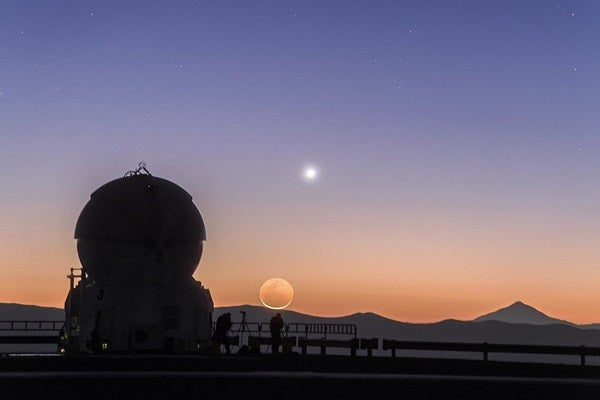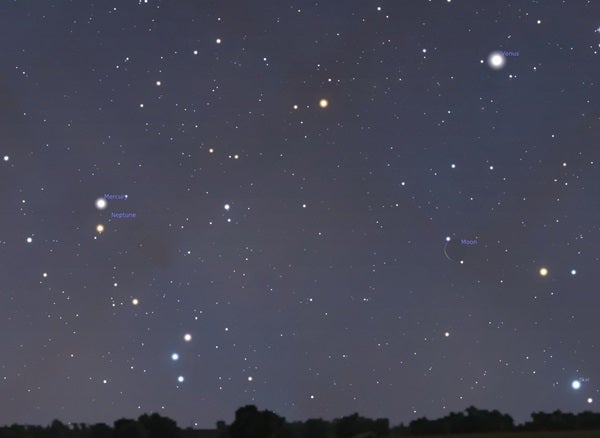The boiling world rises just 22 minutes before the slim crescent Moon, which will hang about 4° directly below Venus. A half-hour before sunrise, the two stand just above of the horizon.
Mercury also joins the Venus-Moon duo tomorrow morning. The innermost planet rises slightly east of the pair some 20 minutes after Venus. And as an added bonus, distant Neptune hangs less than half a degree below Mercury.
Though it’s especially tough to identify Mercury, it helps to start by locating Venus, then use binoculars to help track down the innermost planet.
Mercury currently shines at magnitude 0.9, while dim Neptune shines at magnitude 8.0. Though it’s technically possible to spot Neptune from an extremely dark-sky site, the fact that the planet hangs so near the horizon during twilight makes it a daunting challenge.
When viewed through a telescope this week, Venus shows a disk that appears 13″ across and about 80 percent lit. The disk of Mercury, on the other hand, spans 9.2″ and is about 30 percent lit. Finally, though the disk of Neptune is 100 percent lit, it spans just 2.2″.
For more quick and easy observing tips, check out The sky this week for March 29 to April 7.











